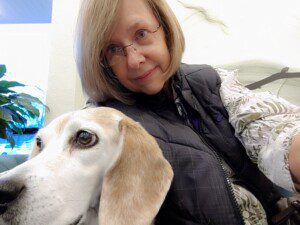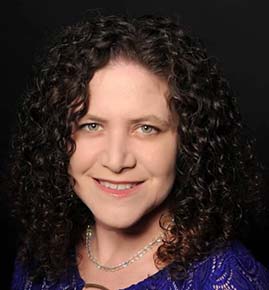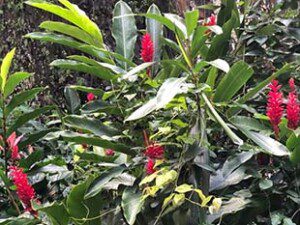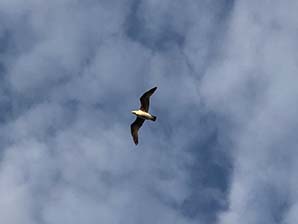Written by Wendy Kahn, MD for the RSDSA blog.
I’ve always been very active, at least until one day in the fall of 2000, when I got a stick stuck in my rollerblade when I stood up to start my ride. I decided to have a controlled fall, but the impact on my sacrum turned out to be anything but controlled. During the next three years, I developed multiple cases of pneumonia, until the fifth pulmonologist figured out that I had twisted my spine, kinking one lung. In 2003, a nerve in my left calf became painful, limiting my walking. My twisting deformity increased steadily until 2005 when suddenly I had such excruciating pain in my legs – first left, then right- that I couldn’t move. You know what that’s like. For once, I don’t have to try to explain.
I saw a neurologist within the week and had the awful studies. I was given too many narcotics too fast, which didn’t control the pain anyway. It took three years, much too long, before a chiropractor finally diagnosed me. I was bedridden, in constant profound pain, often so bad that I couldn’t speak or even maintain consciousness. That’s my 10/10 on the pain scale. Half of my friends and family immediately dropped off the radar, followed by most of the rest in the subsequent years. My daughter couldn’t handle it and left. No one likes pain. Those few that have stayed with me I cherish. My husband, poor guy, was my only support for most of the duration, which is hardly ideal. I hope that your family and friends are more supportive. They can fill your needs and hopefully distract you.
I fought hard all those years to get better, no thanks to the over 100 doctors I saw. None of them helped me, other than to prescribe medications. They all said I would never recover. The first neurologist, years later, had the audacity to tell me, “You should have come in sooner- your RSD could have been successfully treated.” Not one of them could handle my pain as they seemed allergic to it. Some literally drew away from me, while others seemed not to register it at all. No one offered any way out. I tried every available therapy, though I had to find them all myself, sometimes with the help of the RSDSA.
I had to take the helm myself, not easy to do while in such profound pain. If I had not been a doctor and known a little about navigating the system, I am sure I would have killed myself. Ultimately, using a combination of Chiropractic, Low Light Laser Therapy, Gua Sha (Chinese scraping technique), Craniosacral Therapy, massage and acupuncture, I regained my normal anatomic alignment. The impingement on my affected “last” nerve released. Suddenly, my body felt familiar. Since then, I have improved dramatically, regaining bits of my previous life each day. One day I could sit up in bed, then I could walk a little, listen to music, wear socks, crawl into the garden, etc. I recognize my handwriting again.
I’m writing this in the hopes that the messages from my story might help you in your journey. Here is what I have learned:
- Try to find a way to repair the primary injury site. No doctor I saw thought of this, and I still don’t understand why. It follows a basic tenet of medicine that they seem to have forgotten. Once my anatomic alignment was restored, the nerve impingement let go. That was crucial. All the efforts I made to recover prior to that didn’t advance very far, though they were essential for my survival in other ways.
- Get the most you can out of every minute, even when you are in severe pain. It will sustain you. Even in my darkest hours for those 13 years, I was grateful for audio books, internet streaming, my own thoughts, and my loyal husband. Distraction can take you out of the pain, even if it’s only for a second or two.
- Get in touch with your body and believe what it tells you. I used to say, “I rent this space” about my body. I’m much more invested in it now. We work together. It took me a long time to learn how to listen to it, but don’t give up. Move as much as it will let you, maybe even a little more than that.
- Don’t lose hope. Never lose hope. Alternative medicine can offer a lot, although you have to be careful to pick and choose what works for you. There should be someone to guide you, but I never found anyone myself. Hopefully, you will have more luck. At least contact RSDSA to start. A big issue for me was scar tissue, especially after I developed severe atrophy in my calves. For that, Low Light Laser Therapy and Gua Sha were the most crucial. For my muscle spasms, massage was critical. I couldn’t move without it.
It’s only been a month, so I’m not there yet, but I’m on the way to becoming myself again. It feels amazing, though I’m still holding my breath. Yesterday I spent five hours in the garden, albeit on my hands and knees. My garden is going to be gorgeous this year.
Please consider making a donation to RSDSA today!

 Written by Angie Jones for the RSDSA blog.
Written by Angie Jones for the RSDSA blog.



 Written by Elisa Friedlander for the RSDSA blog.
Written by Elisa Friedlander for the RSDSA blog.

